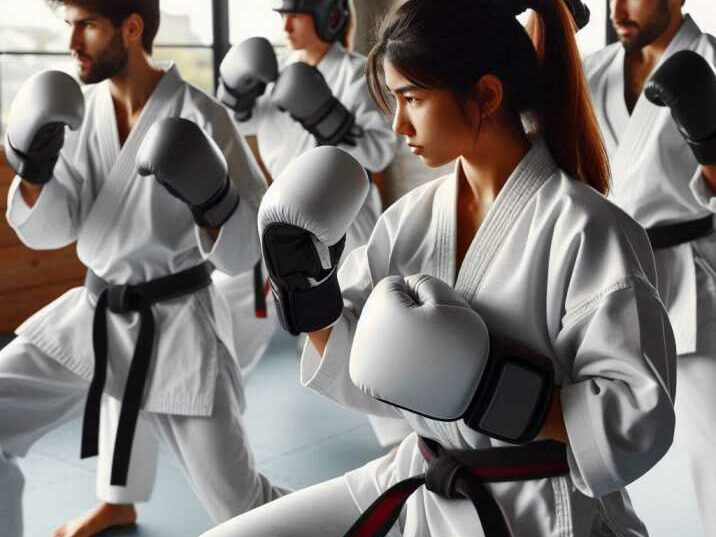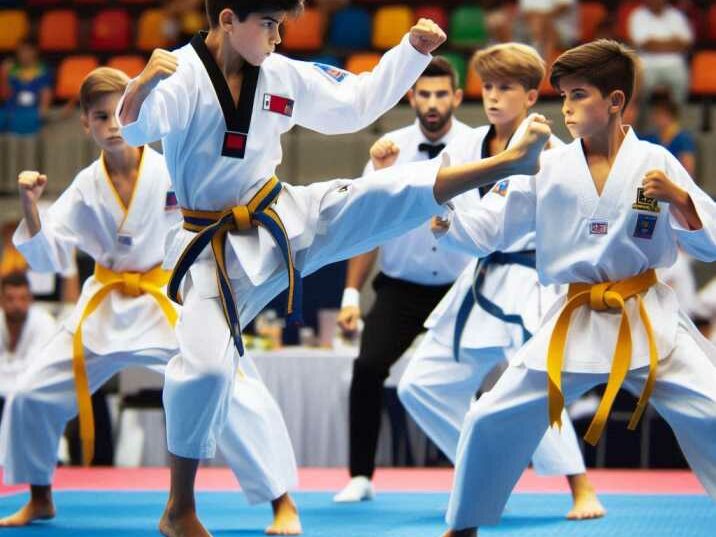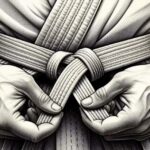Martial arts rules and regulations are essential for ensuring safety, fairness, and discipline across various styles. Whether you’re practicing Karate, Taekwondo, Judo, or any other martial art, understanding the rules and regulations is crucial. In this comprehensive guide, we will explore different aspects of martial arts rules and regulations, including competition guidelines, safety measures, etiquette, and more.
1. General Safety Rules in Martial Arts
Table of Contents
Safety is paramount in martial arts. Each style has specific rules designed to protect practitioners. For example, in Karate and Taekwondo, wearing protective gear such as gloves, mouthguards, and headgear is mandatory. These rules prevent injuries during sparring and competitions. In Judo, the rules emphasize safe falling techniques and prohibit dangerous throws.

Tips for Ensuring Safety
- Always wear the appropriate protective gear: Protective gear is designed to prevent injuries. It includes items like gloves, headgear, mouthguards, and shin guards. In some martial arts, chest protectors and groin guards are also required.
- Warm up properly before training or competitions: Warming up prepares your body for physical activity and reduces the risk of injuries. A proper warm-up includes stretching, light cardio, and specific drills related to your martial art.
- Follow your instructor’s guidance and techniques: Instructors have extensive experience and knowledge about safe practices. Listening to their advice and following their techniques can help prevent accidents.
2. Competition Rules and Regulations
Competition rules vary significantly among martial arts styles. In Karate, points are awarded for clean, controlled techniques, and striking to the head is usually forbidden. In Taekwondo, points are given for kicks to the head and body, and competitors wear protective headgear and chest protectors. Judo competitions focus on throws and holds, with points awarded for effective techniques.
Understanding the Scoring System
- Karate: Points are awarded for punches, kicks, and strikes to designated areas on the opponent’s body. The emphasis is on clean, controlled techniques. Excessive force or dangerous strikes can lead to penalties.
- Taekwondo: Points are awarded for kicks to the head and body, with additional points for spinning kicks. The use of protective gear is mandatory to prevent injuries. Strikes below the belt are not allowed.
- Judo: Points are awarded for successful throws, pins, and submission techniques. The goal is to either throw the opponent onto their back or control them on the ground. Striking is not allowed in Judo competitions.
Important Competition Rules
- Time Limits: Matches have specific time limits, and the winner is determined by points scored or by submission.
- Weight Classes: Competitors are divided into weight classes to ensure fair competition.
- Protective Gear: Wearing the appropriate protective gear is mandatory to prevent injuries.
- Referee’s Decisions: Referees have the final say in scoring and penalties. Their decisions are based on the rules and regulations of the specific martial art.

3. Martial Arts Etiquette and Discipline
Etiquette and discipline are core aspects of martial arts training. Practitioners are taught to show respect to their instructors, peers, and the art itself. Bowing is a common practice in many martial arts, signifying respect and humility.
Key Etiquette Practices
- Bowing when entering and leaving the dojo: Bowing shows respect for the training area and the people within it. It is a sign of humility and discipline.
- Addressing instructors with respect: Instructors are often addressed by specific titles (e.g., Sensei in Karate, Sabumnim in Taekwondo) to show respect for their knowledge and authority.
- Maintaining a clean and tidy uniform (Gi): A clean uniform demonstrates respect for the art and the training environment. It also helps prevent the spread of germs and bacteria.
Importance of Discipline
- Self-Control: Martial arts training teaches practitioners to control their emotions and actions. This is essential for personal growth and development.
- Respect: Respect for others is a fundamental principle in martial arts. Practitioners learn to respect their instructors, peers, and opponents.
- Perseverance: Martial arts training requires dedication and perseverance. Practitioners are encouraged to push through challenges and setbacks to achieve their goals.
4. Belt Ranking System and Progression
The belt ranking system in martial arts signifies a practitioner’s level of skill and knowledge. Most martial arts styles use colored belts to indicate progression, starting from white (beginner) to black (expert).
Progression in Belt Ranks
- Karate: White, Yellow, Green, Blue, Brown, Black. Each belt represents a different level of skill and knowledge. Progression requires passing tests that include demonstrations of techniques, forms (kata), and sparring.
- Taekwondo: White, Yellow, Green, Blue, Red, Black. Similar to Karate, each belt requires passing tests that assess the practitioner’s skills and knowledge.
- Judo: White, Yellow, Orange, Green, Blue, Brown, Black. Progression in Judo is based on technical proficiency, competition results, and time spent training.
Tips for Progressing Through the Ranks
- Regular Practice: Consistent practice is essential for improving your skills and progressing through the ranks.
- Set Goals: Setting specific, achievable goals can help you stay motivated and focused on your training.
- Seek Feedback: Asking for feedback from your instructor can help you identify areas for improvement and track your progress.
5. Training and Sparring Rules
Training and sparring rules ensure that practice sessions are productive and safe. Controlled sparring helps practitioners develop their skills without causing harm to themselves or their partners.
Sparring Guidelines
- Use of controlled techniques to avoid injuries: Sparring is meant to simulate real combat, but safety is always the priority. Practitioners should use controlled techniques to prevent injuries.
- Following the instructor’s commands during sparring: Instructors oversee sparring sessions to ensure safety and provide guidance. Following their commands is essential for a safe and productive session.
- Respecting your partner’s skill level and experience: Sparring partners should be mindful of each other’s skill levels and adjust their techniques accordingly. This helps prevent injuries and ensures a positive training experience.
Types of Sparring
- Light Sparring: Light sparring focuses on technique and control, with minimal contact. It is often used for beginners or as a warm-up.
- Full-Contact Sparring: Full-contact sparring simulates real combat and involves more intense physical contact. It is typically reserved for advanced practitioners and requires protective gear.
- Scenario-Based Sparring: This type of sparring involves practicing specific scenarios, such as self-defense situations. It helps practitioners apply their skills in realistic contexts.
6. Weight Classes and Divisions in Competitions
Weight classes and divisions help ensure fair competition by matching competitors of similar size and ability. This is particularly important in contact sports like Judo and Taekwondo.
Common Weight Classes
- Lightweight: Up to 60 kg (132 lbs). This division typically includes smaller, more agile competitors.
- Middleweight: 60-80 kg (132-176 lbs). This division includes competitors with a balance of strength and agility.
- Heavyweight: Over 80 kg (176 lbs). This division includes larger, more powerful competitors.
Divisions Based on Skill Level
- Beginner: For practitioners with limited experience and lower belt ranks.
- Intermediate: For practitioners with moderate experience and mid-level belt ranks.
- Advanced: For experienced practitioners with higher belt ranks.
7. Role of Judges and Referees
Judges and referees play a critical role in maintaining the integrity of martial arts competitions. They ensure that matches are conducted fairly and according to the rules.
Responsibilities of Judges and Referees
- Enforcing rules and safety regulations: Judges and referees are responsible for ensuring that competitors adhere to the rules and regulations of the sport. They monitor matches for any violations and take appropriate action.
- Scoring points and declaring winners: Judges and referees score points based on the effectiveness and control of techniques. They declare winners based on the points scored or by submission.
- Managing disputes and ensuring sportsmanship: Judges and referees handle any disputes that arise during a match. They ensure that competitors conduct themselves with sportsmanship and respect.
8. Common Penalties and Fouls
Understanding common penalties and fouls is essential for anyone participating in martial arts. Penalties can include point deductions, warnings, or even disqualification.
Examples of Penalties
- Striking prohibited areas: In many martial arts, striking certain areas (e.g., below the belt in Taekwondo) is forbidden. Violations result in penalties.
- Using excessive force or dangerous techniques: Techniques that pose a high risk of injury are not allowed. Using such techniques can lead to disqualification.
- Showing disrespect or unsportsmanlike conduct: Competitors are expected to show respect and sportsmanship. Disrespectful behavior can result in penalties or disqualification.
Common Fouls in Different Martial Arts
- Karate: Striking with excessive force, hitting prohibited areas, and unsportsmanlike conduct.
- Taekwondo: Kicking below the belt, using excessive force, and showing disrespect.
- Judo: Using illegal throws, striking, and unsportsmanlike behavior.
9. Importance of Mental Discipline
Mental discipline is just as important as physical skill in martial arts. Practitioners learn to focus, remain calm under pressure, and develop a strong sense of self-control.
Techniques for Mental Discipline
- Meditation and breathing exercises: These practices help practitioners develop focus and control over their thoughts and emotions.
- Visualization and positive thinking: Visualizing successful techniques and positive outcomes can improve performance and confidence.
- Setting goals and tracking progress: Setting specific, achievable goals helps practitioners stay motivated and focused on their training.
Benefits of Mental Discipline
- Improved Focus: Mental discipline helps practitioners stay focused during training and competitions.
- Better Stress Management: Practitioners learn to manage stress and remain calm under pressure.
- Enhanced Performance: Mental discipline enhances overall performance by improving focus, confidence, and self-control.
10. Cultural Significance of Martial Arts
Martial arts are deeply rooted in the cultures from which they originate. Understanding the cultural background of a martial art can enhance your appreciation and respect for the practice.
Cultural Aspects
- Karate: Originating from Okinawa, Japan, Karate emphasizes self-discipline, respect, and humility. The practice includes traditional forms (kata) that have been passed down through generations.
- Taekwondo: A Korean martial art that values perseverance, integrity, and respect. It is deeply connected to Korean culture and history.
- Judo: Founded in Japan, Judo promotes mutual welfare and benefit. It emphasizes respect, discipline, and the importance of technique over brute strength.
Importance of Cultural Understanding
- Respect for Traditions: Understanding the cultural significance of martial arts helps practitioners respect and preserve the traditions of the art.
- Enhanced Learning: Cultural knowledge can enhance learning by providing context and deeper meaning to the practice.
- Building Connections: Understanding the cultural background of martial arts helps practitioners connect with the global martial arts community.
Table of Information about Martial Arts Rules and Regulations
| Martial Art Style | Key Rules and Regulations |
|---|---|
| Karate | No striking to the head, points awarded for clean techniques, protective gear required |
| Taekwondo | No strikes below the belt, points for kicks to the head, mandatory headgear |
| Judo | No striking allowed, points for throws and holds, Gi uniform required |
| Muay Thai | Elbows and knees allowed, points for aggression and technique, protective gear mandatory |
| Brazilian Jiu-Jitsu | No striking, points for positional control and submissions, Gi or No-Gi divisions |
Conclusion
Martial arts rules and regulations are essential for safety, fairness, and respect in training and competitions. These guidelines cover safety measures, competition rules, etiquette, belt ranking systems, and mental discipline. Each martial art has unique rules and cultural significance, enriching the practice and providing valuable life lessons.
By following these rules, martial artists can develop their skills, prevent injuries, and foster a positive training atmosphere. Instructors guide practitioners in safety, respect, and discipline, while judges ensure fair competition and sportsmanship. Beginners should practice consistently, listen to instructors, and stay informed to understand the rules better.
Whether practicing Karate, Taekwondo, Judo, or any other martial art, adhering to these rules promotes growth, respect, and continuous improvement, making martial arts a fulfilling and enriching experience.
FAQs
Q1: Why are rules important in martial arts?
A1: Rules are essential in martial arts to ensure safety, fairness, and discipline among practitioners. They help prevent injuries and promote respectful behavior.
Q2: What happens if a martial artist breaks the rules during a competition?
A2: Breaking rules during a competition can result in penalties such as point deductions, warnings, or even disqualification, depending on the severity of the infraction.
Q3: How are martial arts competitions judged?
A3: Martial arts competitions are judged based on specific criteria such as technique, control, and adherence to rules. Judges and referees score points and enforce regulations to maintain fair play.
Q4: What protective gear is commonly used in martial arts?
A4: Common protective gear includes gloves, mouthguards, headgear, chest protectors, and shin guards, varying by martial art style to ensure safety during practice and competition.
Q5: How can beginners ensure they follow martial arts rules correctly?
A5: Beginners can ensure they follow rules correctly by paying close attention to their instructor, practicing regularly, and familiarizing themselves with the specific rules of their martial art style.


